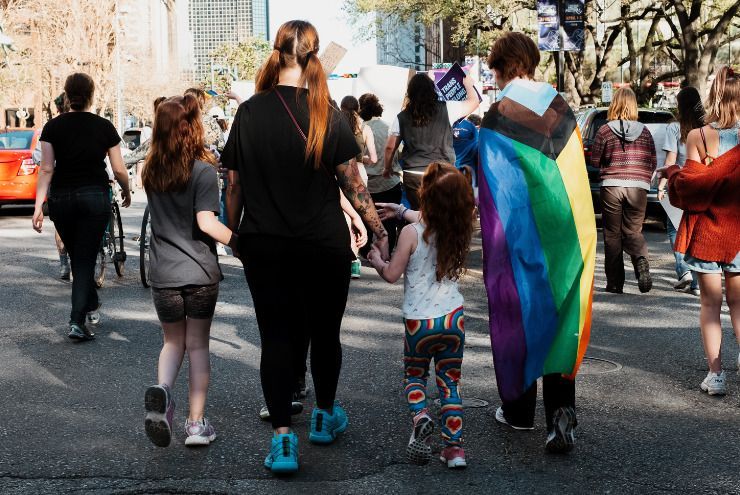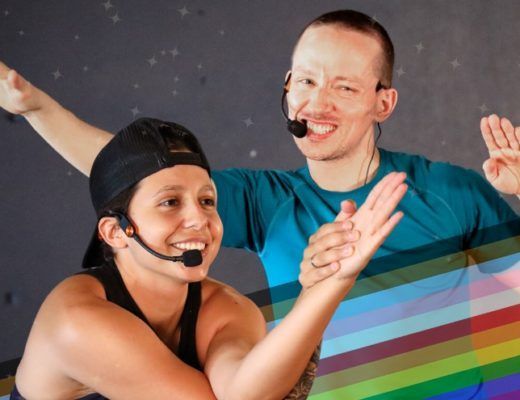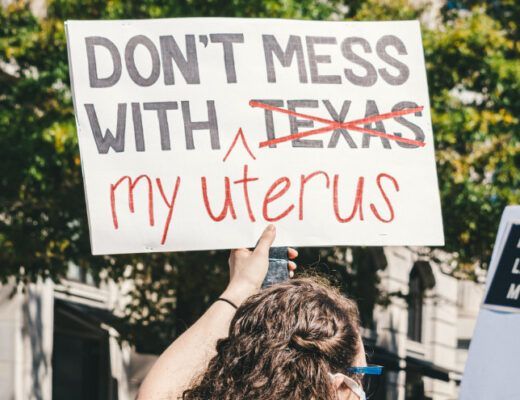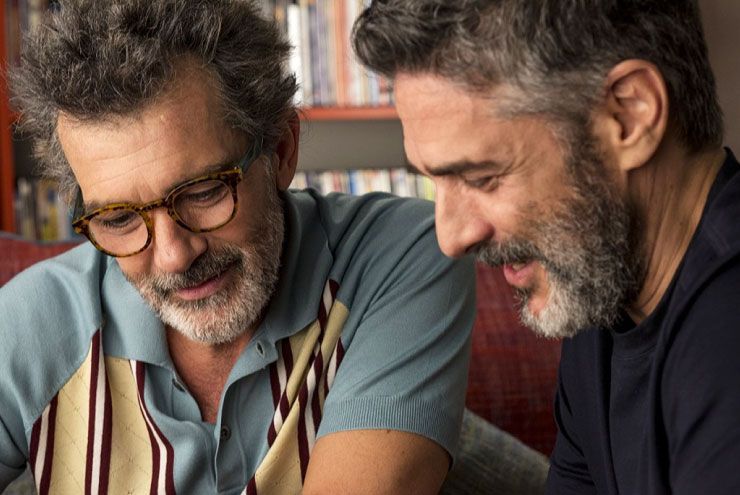By Ainsley Lawrence
While lack of documentation prevents us from knowing the exact number, it’s estimated that there are nearly 2 million LGBTQ youth between the ages of 13–17 in the United States. Queer youth face many challenges in this country, including an increased risk of homelessness. On top of that, they have to deal with the “normal” struggles of being teenagers. They might get bullied or made fun of, they might feel pressured into negative things, and they might feel like they don’t have a support system at home or school.
In the South, things can be even more challenging. While we all like to think that “times have changed,” the reality is that there will always be people with antiquated thinking, and there will always be others who think they’re helping—but are actually hurting—the LGBTQ community. For members of the LGBTQ community, rights in the South can be uncertain, and you might be met with southern hostility, rather than hospitality.
So, what can you do to build up queer youth in a world that breaks them down? How can you become an ally that takes action?
Let’s cover a few things you can do right now that will help the youth in your community, helping to foster a culture that will be more inclusive and accepting in the future.
Gender-inclusive Housing
All kids and teens should feel safe and accepted at home. It should be their sanctuary. Unfortunately, for queer youth, that isn’t always the case. It’s common for LGBTQ teens to “avoid” coming out to their family members because they’re afraid of the consequences. There’s a reason why homelessness is such a problem for queer youth in the United States. Some teenagers come out to their families and they’re thrown out of the house. Others end up leaving on their own because they aren’t in an accepting or safe environment.
Even youth and young adults with places to stay don’t always feel comfortable. College-aged students often have to live in either male or female dorms. Those who are transgender, nonbinary, or gender-fluid might feel uncomfortable and even unsafe with that kind of setup.
Gender-inclusive housing can be a safe and healthy solution for those students. This type of housing allows young people to be themselves and to grow in an environment that accepts them for who they are.
There are several universities across the country that already provide gender-inclusive housing options, including:
- Michigan State
- University of Wisconsin-Madison
- University of Vermont
- Rice University in Texas
- Bates College in Maine
While this isn’t an all-inclusive list, you can easily see a pattern. Southern schools are clearly the minority in terms of representation. That doesn’t mean there aren’t southern colleges that either provide or promote gender-inclusive housing, but there’s a clear gap. You can do your part by speaking up and empowering LGBTQ youth through inclusive practices. Write to area colleges or speak up at community meetings. Educate yourself on problems within the LGBTQ community, particularly those that affect transgender kids. That kind of knowledge can spread like wildfire, beating out years of hatred and stigmas and helping teens and college-aged students find safe environments where they can thrive.
Safe Community Spaces
If you aren’t able to convince area colleges and universities to create gender-inclusive housing, you might have better luck reaching out to your local community. On a local level, you can do your part to create safe spaces for LGBTQ youth. Contact local school boards to adopt inclusive policies and after-school programs that queer youth can safely attend. Work with area YMCAs or community centers. While you may not be able to transform these places into “homes” for teens and students, you can help them become safe places to go to connect with other open individuals, where they can be themselves without fear.
Having spaces where queer youth can simply spend time and interact with others is great. However, you can also use these spaces as advocacy centers. Work to create youth programs in your community that include everyone. Some of the easiest ideas to implement that can make your space seem more inviting and inclusive include:
- Seasonal community gatherings
- Game nights
- Support groups
- Educational movie nights
- Virtual events
The idea is to connect the queer youth of the community with other individuals. Doing so not only keeps young people safer, but it helps to educate those in the community who might otherwise be living in darkness about the struggles these kids face each day. By opening an inclusive space for everyone, you’re both engaging and educating.
Educating Others From an Early Age
The first step in getting rid of hatred is educating yourself and others. History has shown us that people tend to fear the unknown. That can lead to a variety of responses. Some might stay away from the unknown. Others will criticize it from afar. Some will try to fight back and convince others that it’s a threat.
Unfortunately, the queer community regularly faces all of these reactions and more.
Education is a powerful tool. Unfortunately, so is ignorance. The more you can work toward educating the people in your community—especially young people—the brighter the future will be for LGBTQ youth and adults. That might include advocating for school administrators to add queer history to the school curriculum or hosting after-school programs designed to bring LGBTQ and non-LGBTQ kids together.
Educating others on the queer community and how to be more inclusive and accepting is important. But don’t forget to do your part to educate the local queer youth, too. You might not realize it, but it very may well save their lives. Queer youth, especially those in unwelcoming homes or schools, may feel like outcasts because of who they are and the lack of support they have behind their identity. Some may even second-guess their identity, and in fact, nearly half of the queer youth population consider suicide as a result.
To prevent this statistic from rising, local schools and community centers alike need to have programs and resources available for queer youth—doing so can not only save their life but help address some of the symptoms associated with low self-esteem that LGBTQ youth may be struggling with, like:
- Feelings of anxiety and stress
- Loneliness
- Strained relationships with friends
- Hindered performance at school
For your part, you can promote healthy relationships for these kids. If they aren’t getting the positivity they need at school, things like Big Brother/Big Sister programs, community groups, and support groups can make a big difference. Some kids might even benefit from seeing a licensed counselor to help them dissect their emotions and learn how to build confidence in a world trying to break them down.
When you see how local queer youth can struggle, it breaks your heart. You may assume, however, there’s not much you can do to help.
Clearly, that isn’t true.
If you’re willing to educate yourself, educate others, and serve as an ally who takes action, there’s plenty you can do for southern LGBTQ youth. Don’t be afraid to volunteer your time, resources, and skills to foster a community that’s safe and welcoming for them. The more people who take the initiative to do so, the stronger those communities will be. Hopefully, as more people advocate, the queer youth of the future won’t have to deal with the same uncertainties and struggles as they do today.







